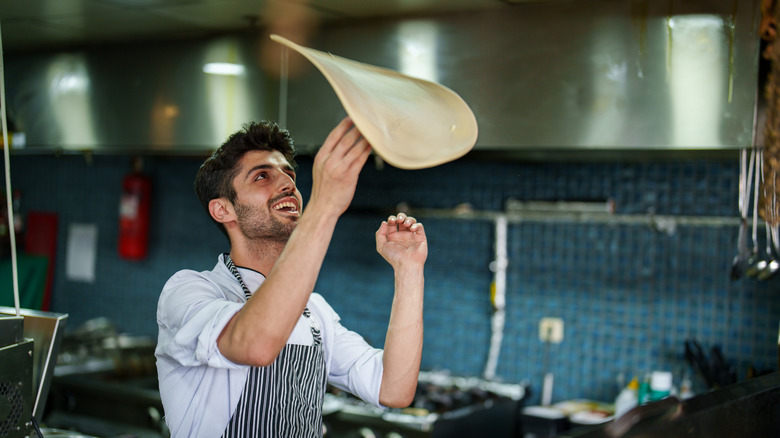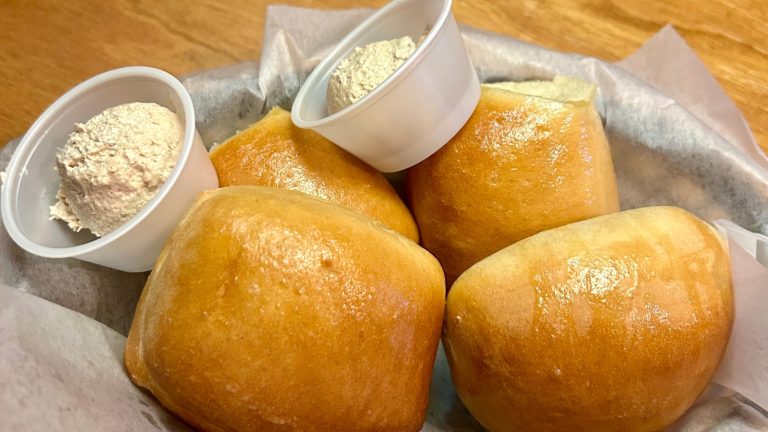Pizza isn’t something everyone is brave enough to try at home. Whether it’s figuring out the right oven temp or how to form the dough in the first place, the many steps can be intimidating. Especially if you want to make homemade pizza so good it tastes like it came from your favorite neighborhood pizzeria.
There is a lot that goes into a good pizza — perfecting the sauce, choosing the right combination of toppings, and then there’s the dough. At the core of any good pizza is a killer dough, and one of the biggest mistakes home cooks make lies in learning how to properly stretch it out. Plenty of experts have weighed in on making the best pizza dough at home (like celebrity chef Paul Hollywood, for one), but Daniel Holzman, chef and owner of Danny Boy’s Famous Original Pizza in Los Angeles, recently shared some expert tips with Chowhound that shed some light on how pizza restaurants actually manage that perfect crust every time, and how you can learn to master the technique at home.
According to Holzman, the key is in the resting phase of the dough — specifically, how long and at what temperature. “If your dough comes straight from the fridge,” he says, “it’ll have too much spring and you’ll never be able to stretch it.” Holzman recommends giving it time to warm up so it is around 65 to 70 degrees Fahrenheit before you start working with it. Before you get started, he suggests doing what he calls the proof test. “Poke your finger into it,” he says. “If the dough bounces back, it’s not ready to stretch.” But if the dough stays indented after you pull your finger back, you are good to go and start stretching it into shape.
Helpful hints go a long way
Daniel Holzman offers additional tips for helping your pizza dough become a stellar creation you can be proud of, starting with how to mix the dough to begin with. He recommends taking care not to overwork the gluten when initially mixing the dough before you even set it to rest. “Mix it until it has a smooth and silky consistency,” he says, “about seven minutes with a mixer or 12 minutes by hand.” From there, the dough will continue to develop as it rests.
He also weighs in on what to use to prevent the dough from sticking while you work with it. “Both flour and cornmeal work well,” he says, meaning they both do the trick of keeping the dough from sticking to your work surface and your fingers, but one has an advantage that home chefs might appreciate. “Cornmeal tends to give the dough a crispy texture, which might be advantageous if you’re working with a thinner stone or without commercial equipment.”
It may sound like a lot of work, but the outcome is pretty impressive. Of course, you can skip all the hassle and buy pre-made pizza dough at the store (there are plenty of good ones and some not so good ones, but making it yourself is not only fun but rewarding. Plus, you get to express your creativity, as well as the boundaries of your taste buds, by using whatever unusual and underrated toppings your heart desires.






